Question
The following are audit procedures from different transaction cycles: 1. Examine sales invoices for evidence of internal verification of prices, quantities, and extensions. 2. Select
The following are audit procedures from different transaction cycles:
| 1. | Examine sales invoices for evidence of internal verification of prices, quantities, and extensions. |
| 2. | Select items from the client's perpetual inventory records and examine the items in the company's warehouse. |
| 3. | Use audit software to foot and cross-foot the cash disbursements journal and trace the balance to the general ledger. |
| 4. | Examine loan agreements for key information such as interest rate, payment schedules, collateral, and restrictive covenants to determine whether management has properly included required disclosures in the footnotes to the financial statements. |
| 5. | Select a sample of entries in the acquisitions journal and trace each one to a related vendor's invoice to determine whether one exists. |
| 6. | Examine documentation for acquisition transactions before and after the balance sheet date to determine whether they are recorded in the proper period. |
| 7. | Inquire of the credit manager whether each account receivable on the aged trial balance is collectible. |
| 8. | Compute inventory turnover for each major product and compare with previous years. |
| 9. | Confirm a sample of notes payable balances, interest rates, and collateral with lenders. |
| 10. | Use audit software to foot the accounts receivable trial balance and compare the balance with the general ledger. |
Complete all answers boxes for each audit procedure in the table below. (Abbreviations used: A+P = Acquisition and payment, CA+R = Capital acquisition and repayment, I+W = Inventory and warehousing, P+P = Payroll and personnel, SAP = substantive analytical procedure, S+C = Sales and collections, ST of T = test of transactions, SUB = substantive test, TD of B = test of details of balance, TOC = test of control.)
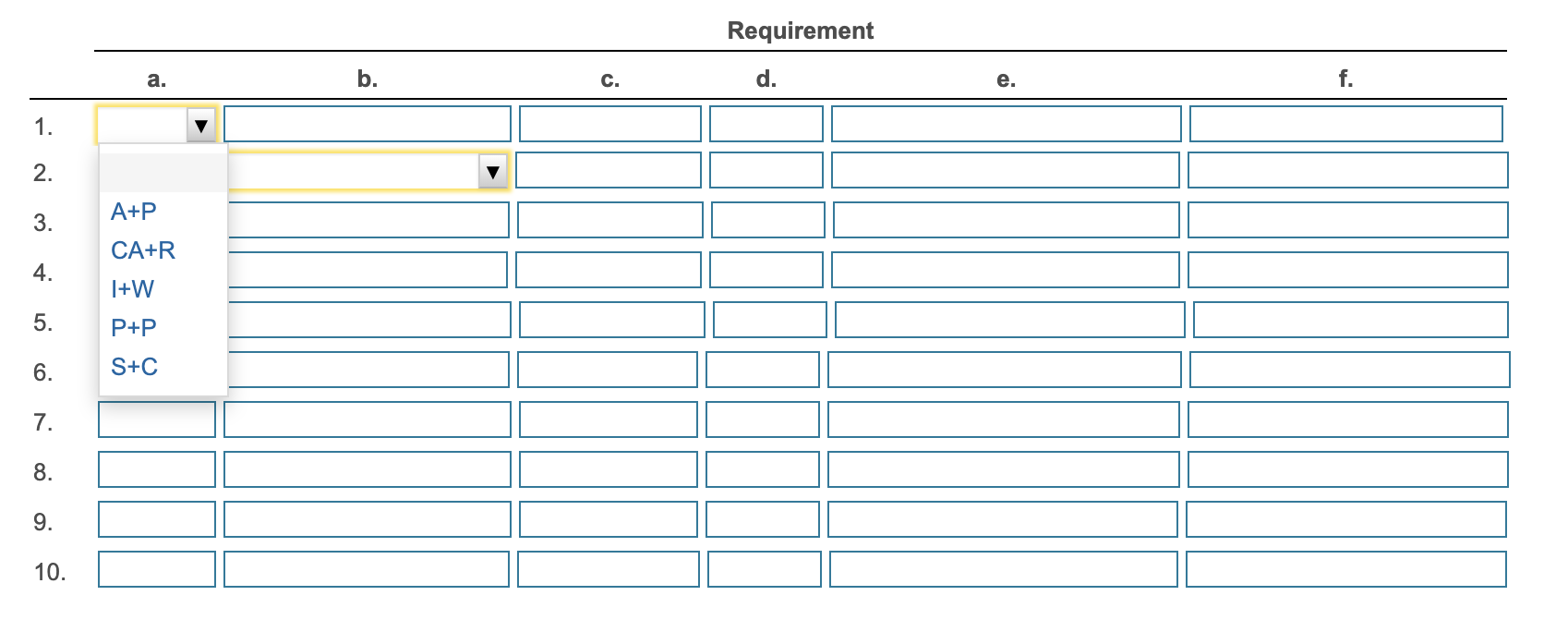
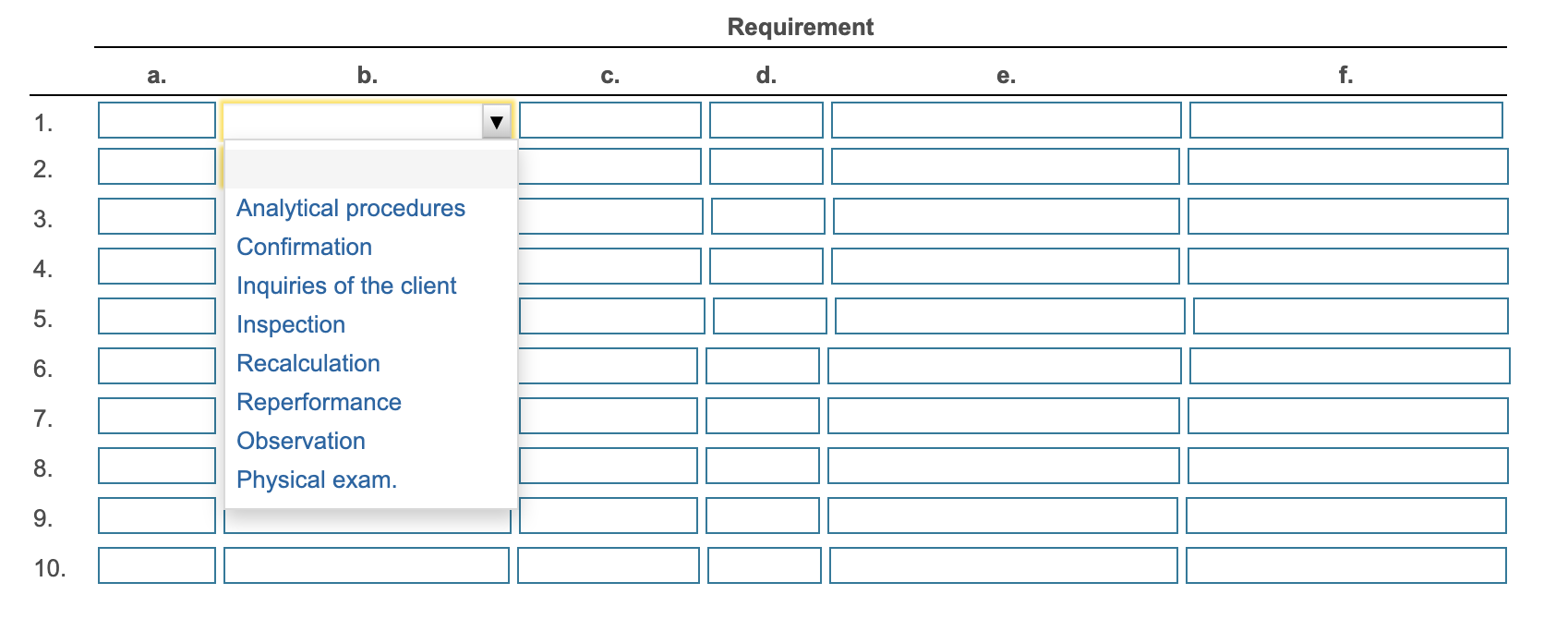
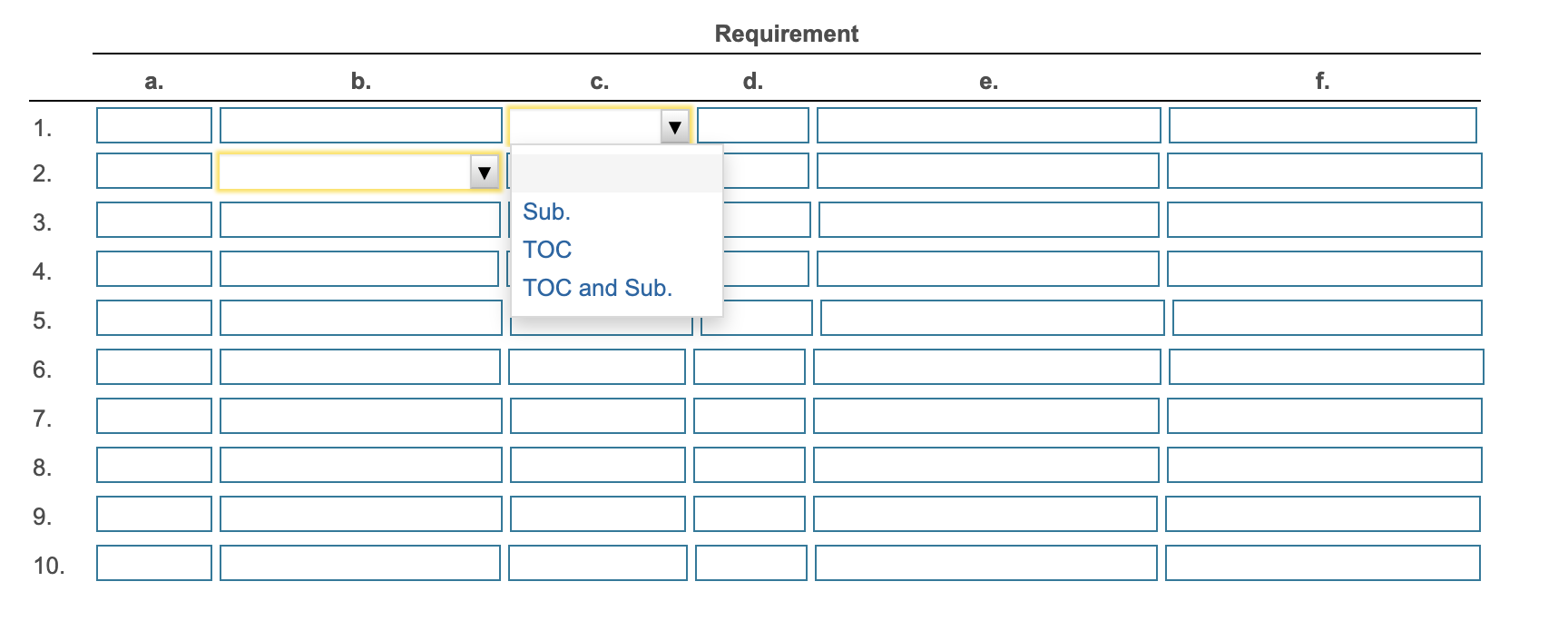
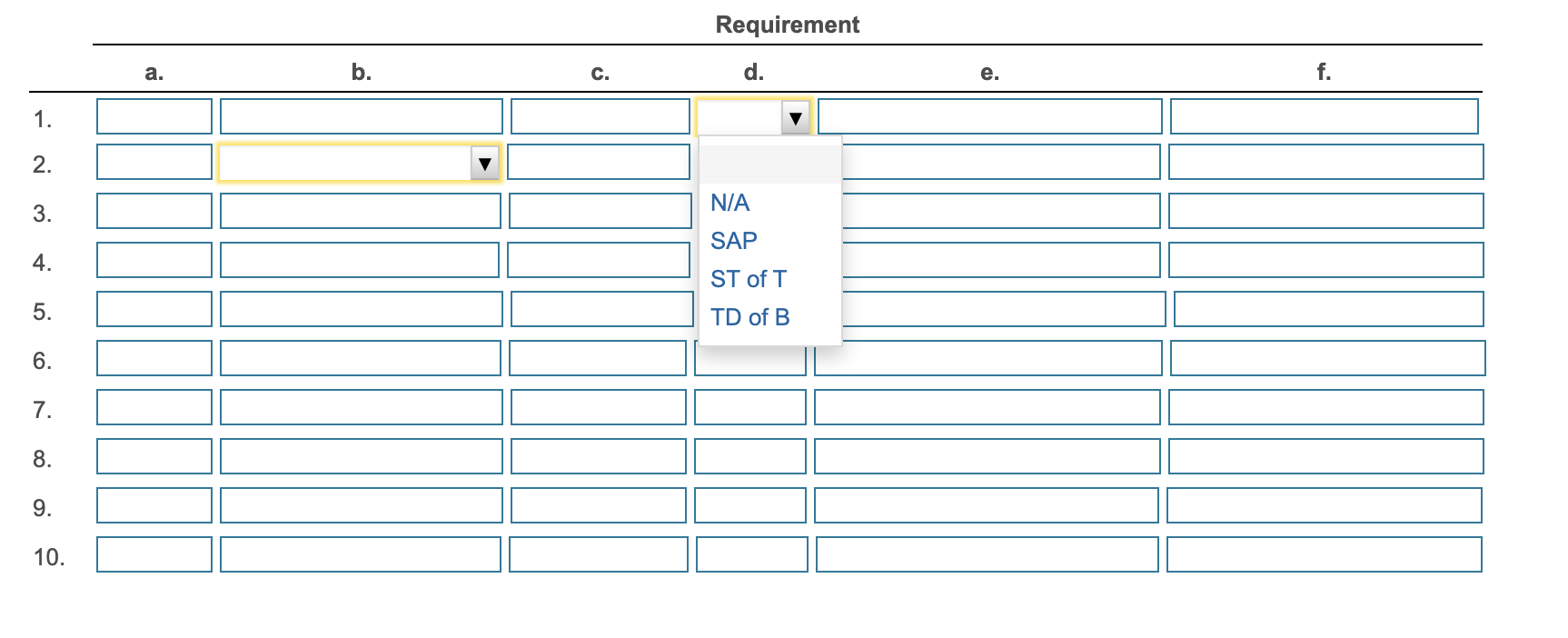
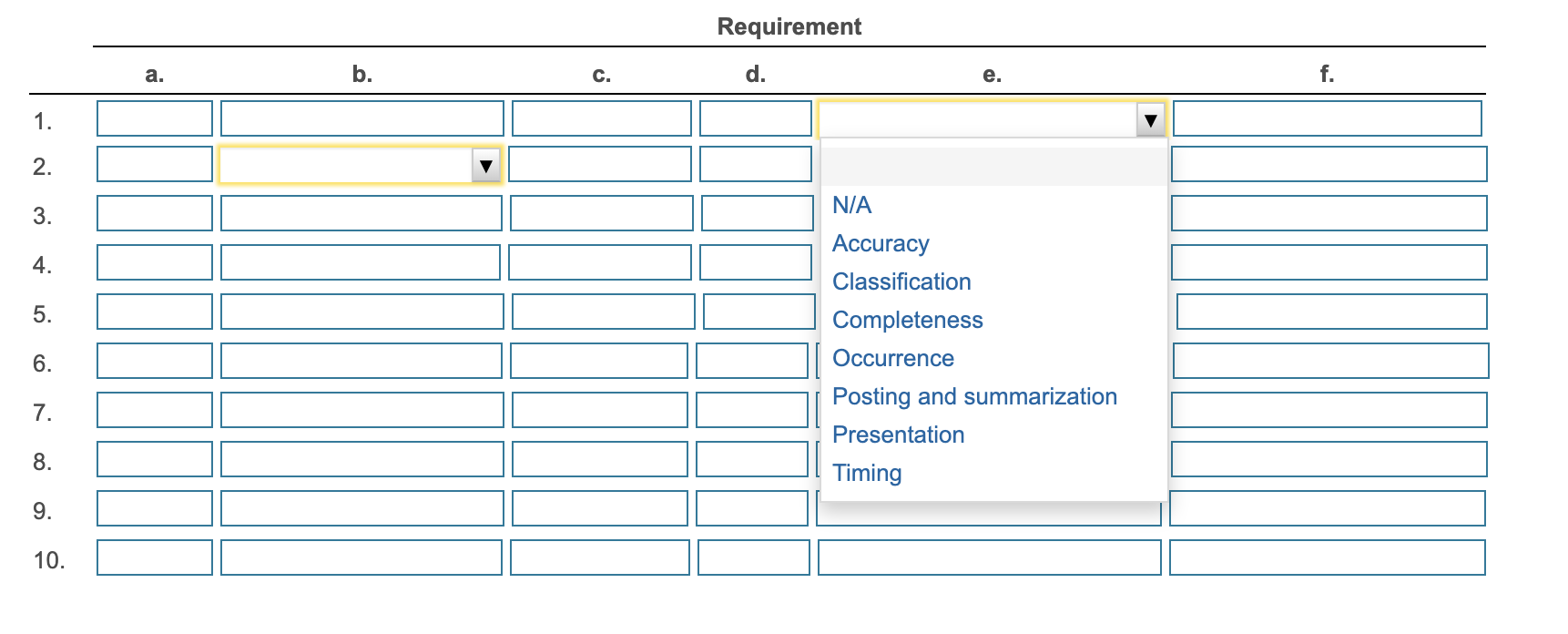

Step by Step Solution
There are 3 Steps involved in it
Step: 1

Get Instant Access to Expert-Tailored Solutions
See step-by-step solutions with expert insights and AI powered tools for academic success
Step: 2

Step: 3

Ace Your Homework with AI
Get the answers you need in no time with our AI-driven, step-by-step assistance
Get Started


